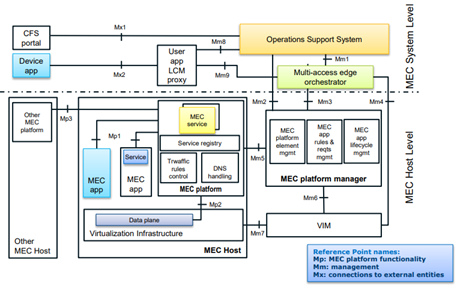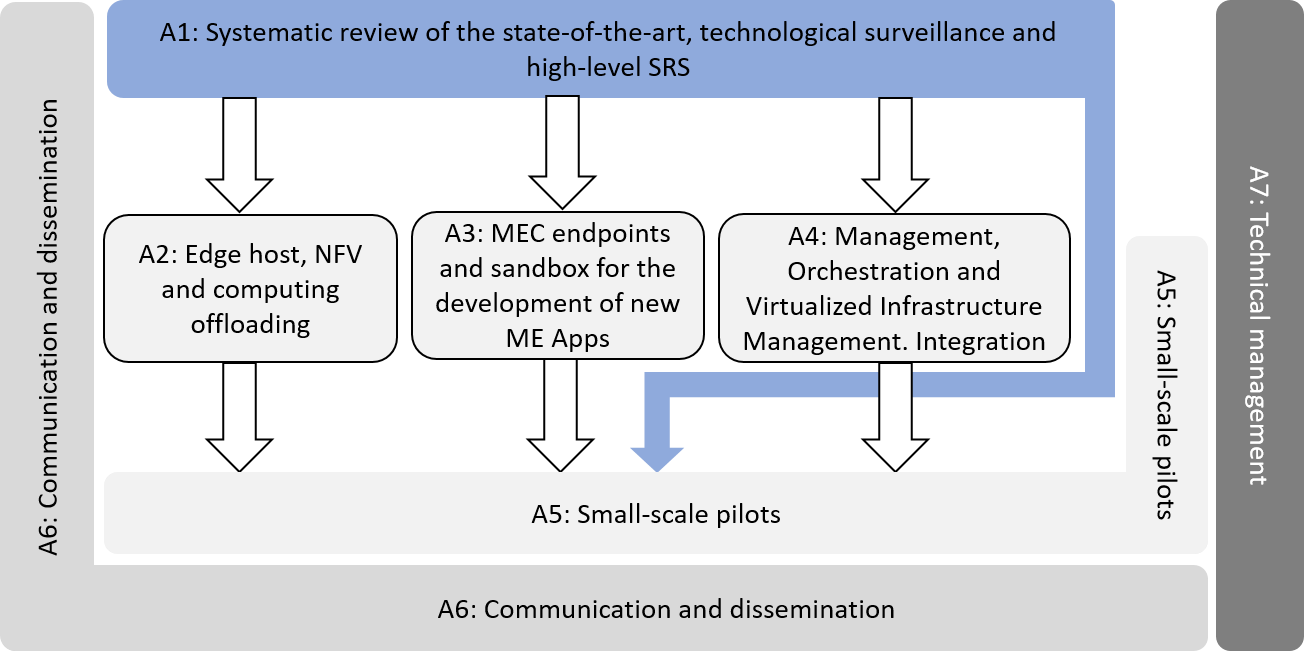Edge computing is essential to fulfill the requirements of low-latency scenarios, including most use cases grouped in Ultra-Reliable Low Latency Services (URLLS), which are characterized by low latency and high reliability and availability. Its market is predicted to grow substantially in the next few years, mainly driven by the massive deployment of IoT devices/applications, digitalization of industrial processes, and the emergence of 5G mobile connectivity. 
Edge computing is essential to fulfill the requirements of low-latency scenarios, including most use cases grouped in Ultra-Reliable Low Latency Services (URLLS), which are characterized by low latency and high reliability and availability. Its market is predicted to grow substantially in the next few years, mainly driven by the massive deployment of IoT devices/applications, digitalization of industrial processes, and the emergence of 5G mobile connectivity.
DSTELECOM, the leading company of the consortium, has around 100 points of presence (PoP) connecting its fiber-to-the home (FTTH) infrastructure, positioning itself as a candidate provider of a disruptive and agile telecommunication infrastructure serving specialized use cases and key clients. For DSTELECOM, a PoP is an edge server location where the fiber optic backhaul is accessed. Seeing the opportunity to take advantage of its extensive infrastructure in Portugal to explore a network of edge computing resources as well as the business possibilities in different geographies, DSTELECOM brought together a consortium of experts in cloud computing (BEE Engineering) and telecommunications (UMINHO and IT), in addition to two industrial partners interested in exploring the potentialities of the technology (BYSTEEL FS and FAPAJAL), to present the current R&D project proposal.
NETEDGE partners will collaborate to develop a prototype of a MEC platform, positioned at the edge of an FTTH network based on GPON technology, to provide computing specifically tailored services with ultra-low latency. The proof-of-concept validation will be carried first in isolated tests, and then in realistic scenarios with edge equipment and user driven requirements. One scenario, taking place at BYSTEEL FS, will involve using video cameras to monitor one of its manufacturing processes and the occupancy of a warehouse, providing a security driven scenario suited for machine learning, object recognition and computation intensive workloads. The other, taking place at FAPAJAL, will involve the analysis, in real time, of the quality of the energy supplied to the entire plant, demonstrating the suitability of the solution to high speed data analysis and the support of critical infrastructures. The final result will be a standard aligned, validated prototype MEC Platform (TRL5) with competitive features that can position the consortium in an excellent position to seek its future exploitation.
The starting point to the project is the MEC reference architecture and specifications developed by ETSI. The project also builds up on the architecture blueprints and the results produced by related work and open-source initiatives on MEC, NFV and SDN.

Multiple research activities will be developed. First, the investigation on the disaggregation and virtualization of the access to the PON infrastructure and on secure environments for ME Apps (Multi-access Edge applications) assuring their isolation, integrity and resilience. Then, the research on several technologies (e.g., Hardware Secure Modules (HSMs), Moving Target Defense (MTD), and distributed ledger technologies) to promote end-to-end security of the MEC environment, and enhanced protection of the infrastructure and accountable resource usage. Also, the exploration of new mechanisms to extent of the management and orchestration of the (potentially) many ME Platforms to cover inter-domain use cases. Finally, investigation in the application of generalized computer vision as a service, and high-speed data processing as a service, will be carried out in order to validate the prototype version of the ME Platform.



